The Inca of Machu Picchu: People of the Sun
DIGITAL EFFECT: The Inca
Crossfade the scene to the coordinates of Machu Picchu, on the Southern Hemisphere 2012 winter solstice, at the beginning of astronomical morning twilight. If presenters would like to use the current year instead, update with the correct year.
VISUAL 31 (still): Map with Machu Picchu Marked
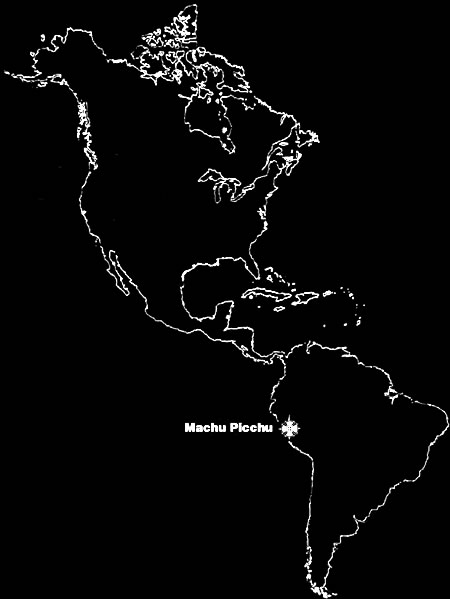
Throughout the Americas, people tracked the Sun as it rose and set along the horizon to keep calendars. In Peru, we find evidence of a complex and sophisticated astronomy practiced by the Inca in their worship of their most important deity, Inti, the Sun, and to keep a calendar for civil and religious purposes. The Inca call themselves “People of the Sun.”
We are in Machu Picchu. There are a variety of buildings here.
VISUAL 32 (still): Torreon
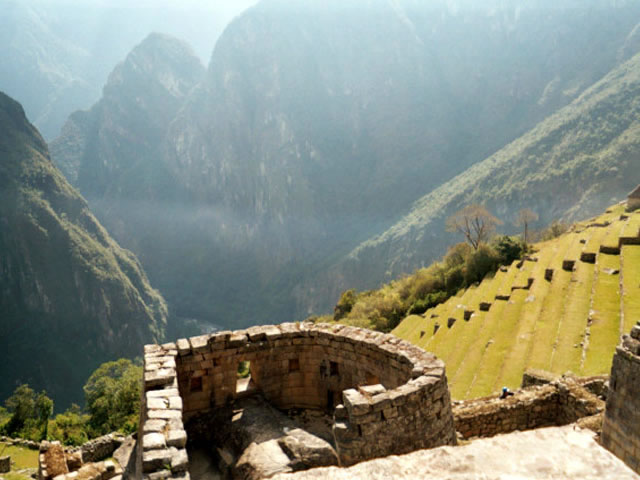
[Fade on a small image of the Torreon at Machu Picchu at the marked position on the map, and then scale up and move the image for viewing.]
One building stands out—the Torreon. It is fitted carefully to the bedrock stone. Inside, there is a straight edge cut into the bedrock platform that dominates the floor of the Torreon.
There are no other curved buildings at this site. Many people speculated about what the Torreon might have been: a palace, a tomb, a special chamber for an important person? No one was sure.
In 1980, a team of astronomers carefully surveyed the building. They discovered that one window points toward the northeast. Beginning in May, the light from the rising Sun enters this window and shines on the stone. On the winter solstice (which is in June in the southern hemisphere), the sunlight lines up exactly with the edge of the carved ledge on the bedrock stone as the shadow of a plumb bob suspended in front of the window shows us.
[Fade off the image of the Torreon.]
VISUAL 33 (still): Shadow on Bedrock Stone
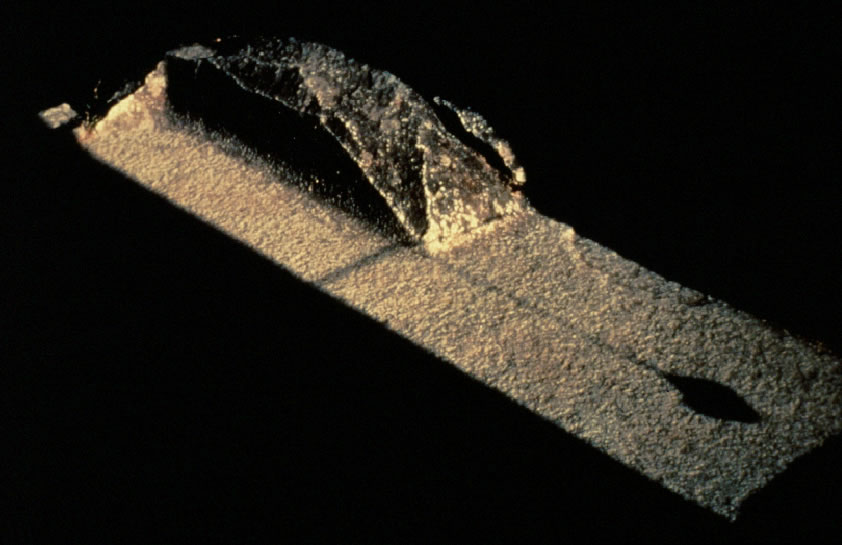
DIGITAL EFFECT: Winter Sunrise
Turn the planetarium clock on, and after a 2 second delay to mention the clock, run diurnal motion forward to sunrise on the winter solstice.
DIGITAL EFFECT: End Shadow
Fade off the image of the Shadow on Bedrock Stone.
The Torreon is a place to predict and observe the winter solstice. It is the time of the most important Incan celebration, Inti Raymi, when all peoples in the Incan empire paid homage to the Sun and to their rulers. From historical records we know that ceremonial offerings were made throughout the month leading to the solstice.
If the winter solstice was an important time of celebration for the Inca, can you think of another time of year when they would celebrate Inti, the Sun?
[The summer solstice or the equinoxes, or zenith passage.]
At the summer solstice, there was another celebration, Capac Raymi, to initiate the sons of the high born class and celebrate the Incan creation story.
VISUAL 34 (still): Entrance of Intimachay
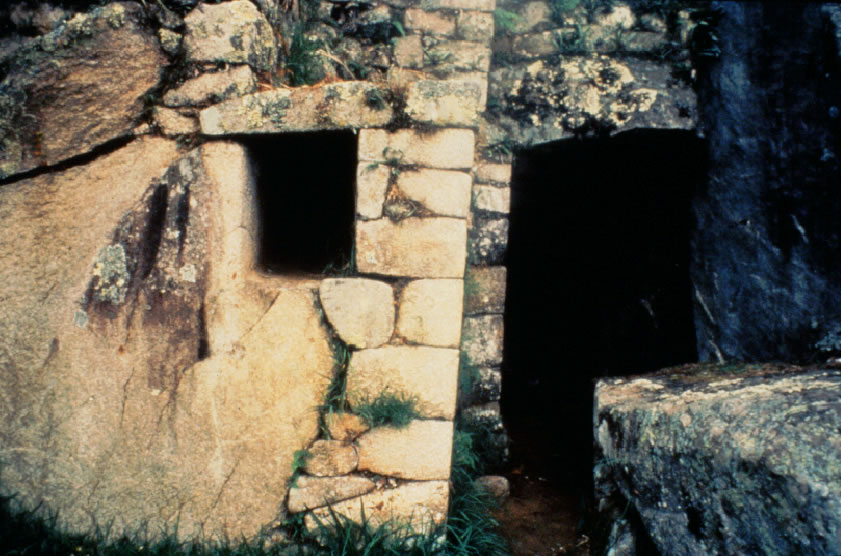
Fade on the image. Use pointer to show where the window is located in the image.
The astronomers looked for some other structure that might be used to observe the summer solstice for the celebration of Capac Raymi. They found an unusual structure at Machu Picchu, a modified cave with a single small window. The window faces the point on the southeastern horizon where the Sun rises on the summer solstice.
VISUAL 35 (still): Horizon through Window of Intimachay

Fade on a small image of the view of the Horizon through Window of Intimachay at the entrance door of the Intimachy, and then scale up and move the horizon image off to the side—centered above where the summer solstice sunrise will be.
Through the window, you can see only a small piece of the horizon, about twice the width of the disc of the Sun. This structure could be a summer solstice observatory.
DIGITAL EFFECT: Summer Sunrise
Advance one month every two seconds until the date of the (Southern Hemisphere) 2012 summer solstice.
Fade off the two Intimachay images.
VISUAL 36 (still): Machu Picchu from a Distance
[Fade on the image.]

At Machu Picchu, the evidence in the stone buildings indicates Incan knowledge of the sky, which is separately confirmed in historical accounts.
Image 37 (still): Modern Peruvian Peasant Market
[Fade on the image.]
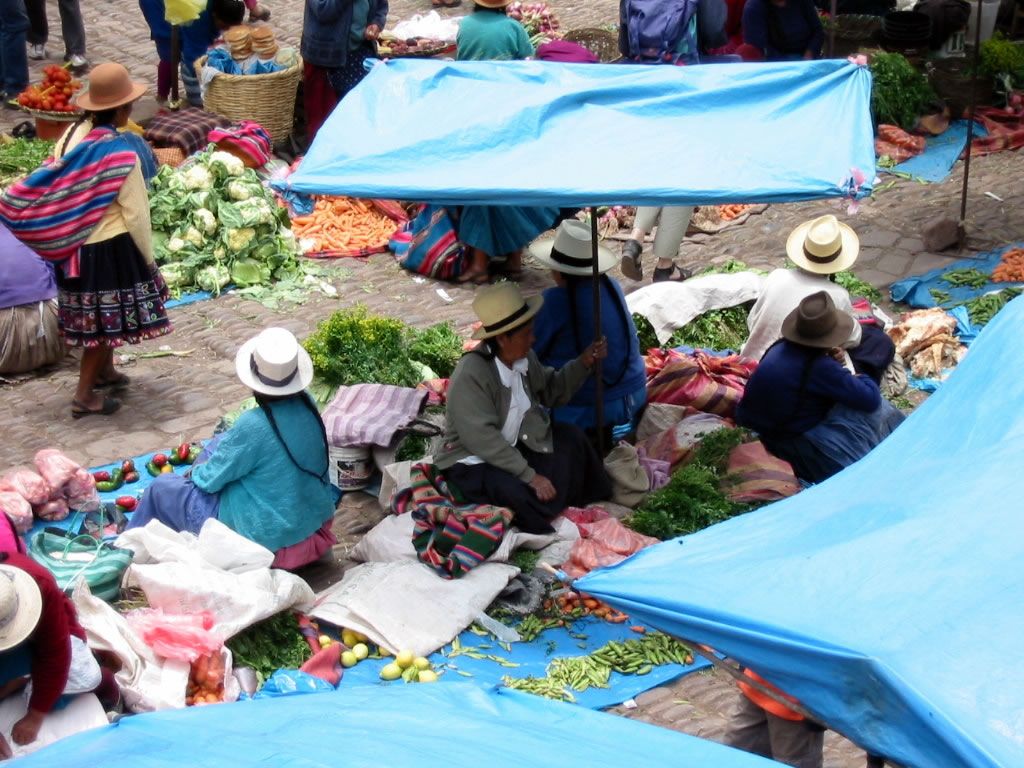
DIGITAL EFFECT: Changing Seasons
Advance one month every two seconds until the date of the (Southern Hemisphere) 2013 summer solstice. Then fade on the Moon before running diurnal motion forward until sunset over 15 seconds. As diurnal motion continues to run forward until about 90 minutes past sunset, fade off the images, atmosphere and clock.
Today, the descendants of the Inca live, work the land, and continue to track the Sun along the horizon to keep a planting calendar. They continue a tradition of Sun watching that is thousands of years old.

